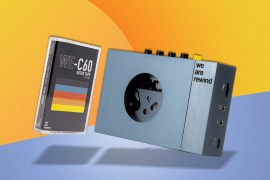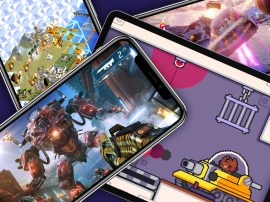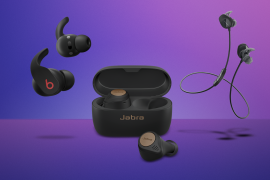Shutter showdown: which smartphone has the best camera?
iPhone 6, LG G4, HTC One M9 and the Galaxy S6 - our final verdict

We want to find the best smartphone camera money can buy.
Over the last year we’ve seen a whole new array of amazing phones throw their hat into the ring, each one boasting fast innards, supercharged features and crystal clear cameras.
Five of the latest and greatest are the Apple iPhone 6, iPhone 6 Plus, HTC One M9, Samsung Galaxy S6 and LG G4, and we’ve already asked you, the Stuff readers, to pick your favourite in our blind smartphone camera test.
We put all five handsets through their paces in and around London, to conclusively see which one offer the best camera of the lot.
Here’s how they stacked up against each other:
The hardware
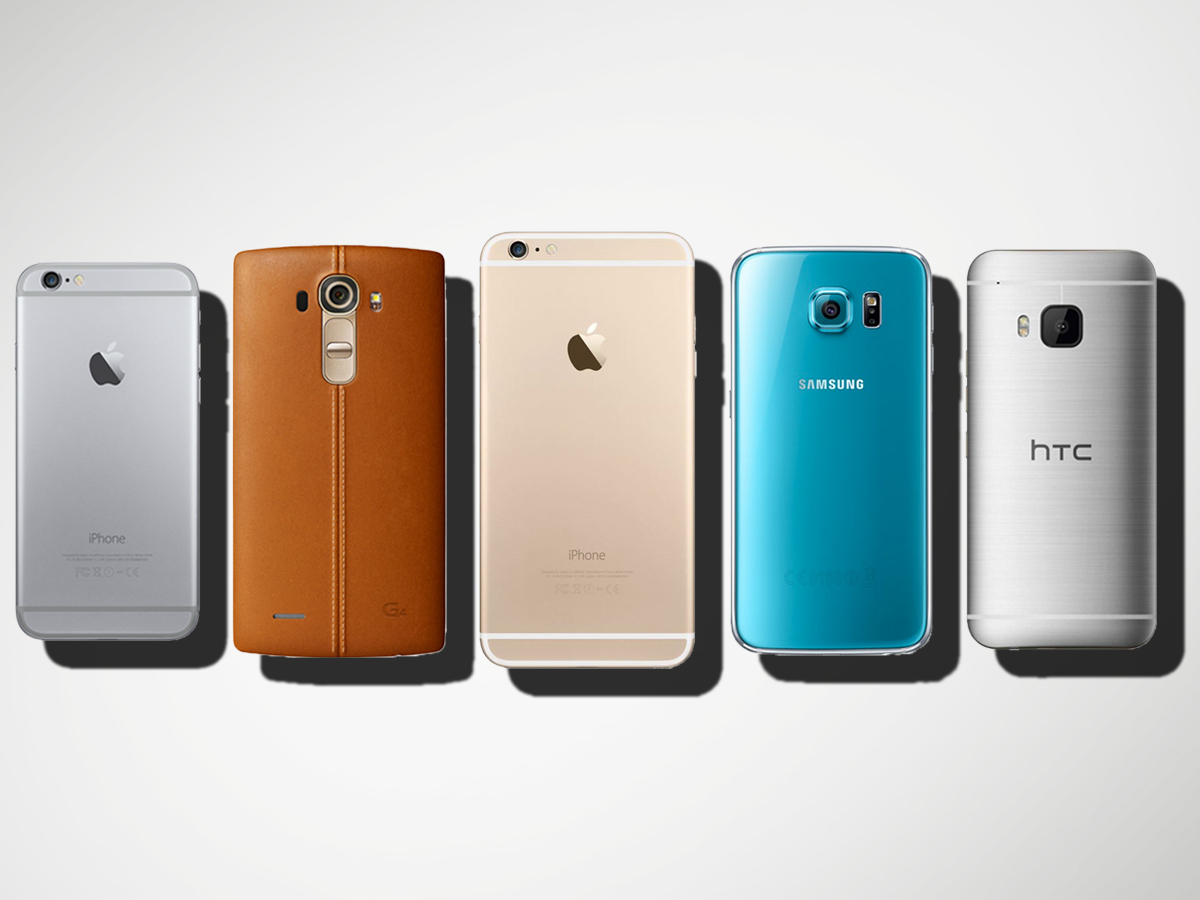
There’s a lot more to cameras than the numbers of its spec list, but it’s interesting to see what areas the manufacturers have tried the hardest at. As usual, Apple seems pretty effortless with its iPhone 6 and iPhone 6 Plus.
They both have 8MP cameras, with 1/3in sensors and f/2.2 lenses. None of these elements are all that impressive. The iPhone 6 Plus takes a step up with optical image stabilisation, something we’ve seen many times in Android and Windows phones, but never in an iPhone until this generation.
Samsung and LG pack in a lot more impressive-sounding tech. The Galaxy S6 and G4 have 16MP 1/2.6-inch sensors: significantly larger, but with loads more pixels packed in too. It’s likely these are both variants of Sony sensors, although Samsung hasn’t been totally clear about this yet.
Optical image stabilisation (OIS) in in too, and the LG G4 goes one step further by offering additional laser focus and colour sensors. These sit on the back and basically give the main camera brain more info to work with, letting it shoot better pics more quickly. The LG G4 also has a slightly faster lens, with f/1.8 aperture to the Galaxy S6’s f/1.9.
At first glance the HTC One M9 seems like it might be top of the tree. It has an even larger 1/2.3in sensor and 20MP resolution. However, it doesn’t have the extras seen in the others. There’s no OIS and lens aperture isn’t as fast as the Galaxy S6 or LG G4 at f/2.2.
Now let’s see how they are in practice.
Related › Samsung Galaxy S6 review
Detail: Peeping pixels
How much detail a camera can resolve seems like a pretty simple equation. More resolution equals more detail, right?
While that’s not nonsense, there’s more to consider. First, not every single camera here uses all its resolution when shooting ‘normal’ photos. The iPhones, the G4 and Galaxy S6 do, but the HTC One M9 doesn’t.
Most people like to shoot with as aspect ratio that fills the screen (16:9), and while the HTC One M9 does this by default, it means you only use about 16 megapixels, not 20. So, yes, the M9’s megapixel advantage really is just about the numbers when you look closer.
Checking out the photos above, the HTC One M9’s shots also look a little bit softer than the LG G4 or Galaxy S6’s right down at the pixel level.
The LG G4’s photos are the sharpest overall, but they also appear sharpened. So the sharpness is down to processing, not some extra ability of the actual hardware.
Still, these two are absolutely at the top of the tree, with the HTC One M9 lagging behind just a bit.
It’s here we see the iPhone 6 and iPhone 6 Plus lose by having only half the resolution. While they make great use of the megapixels they have, when you zoom in using Photoshop or something similar, the ultra-fine detail you can get when shooting outdoors with good lighting with the LG G4 or Samsung Galaxy S6 isn’t there.
Related › LG G4 review
Zoom: Where resolution really matters
Does this matter? If you’re taking photos just to post to Instagram or Facbook, with no need to crop into them to make the image you really want, no.
Unless you really get in there, the iPhone 6 and 6 Plus offer at least as good an impression of detail as the rest, or better. Where the extra resolution really comes in handy is when you want to use the zoom.
Digital zoom is best approached as a last resort thing, as all it really does is to crop into the image and enlarge it, tarting it up a bit with some clever software work. However, sometimes there’s no way around using it.
The LG G4 and Samsung Galaxy S6 are leagues ahead of the iPhones when using digital zoom. Even at 4x zoom (as far as most phones go) the LG and Samsung shots pass for pretty uncompromised photos where the iPhone shots show they’re clearly made using limited information. It’s like you’re looking at them online and they haven’t loaded properly yet.
The softness we saw when looking close-up at the ‘normal’ HTC One M9 photos becomes all the more apparent in the zoomed-in shots. They’re oddly soft and milky-looking. Not ugly, just indistinct.
Related › Apple iPhone 6 review
Colour: Popping shades
What you’ll generally notice much more often than the detail level is whether a photo has a weird, unnatural colour cast to it. As is generally the case, Apple’s iPhones absolutely nail this one.
Colour and white balance are dead on, every time. The Samsung Galaxy S6 is very similar 95 per cent of the time too, with natural-looking shots 24/7.
The LG G4 is generally excellent as well, but despite having a dedicated colour sensor on its back, it does at times tend to make its photos a little warm-looking. Now, this never trips over into making shots appear totally unrealistic, just a little warmer. We’ve seen this sort of approach in some Lumia cameras in the past, and it’s nice on the eye candy stakes. But it’s at times less accurate than the iPhones or Samsung Galaxy S6, despite having that bonus sensor.
It’s the HTC One M9 that has more significant problems with white balance and colour. Its shots generally look very warm, with a yellow and green cast common. On occasion this can really work for the shot, but shows up as an unnatural cast when you take a closer look in a photo editing app. For example, we tried bringing out the shadow details in one M9 photo only to find they were all tinted green. Weird.
Related › HTC One M9 review
Exposure: How bright are you?
The only phones that offer pretty much perfectly even exposure all the time when not shooting with any HDR aid are the iPhone 6 and iPhone 6 Plus. From our shots at least, they seem pretty much immune to overexposure, unless it’s really needed to properly expose the rest of the scene.
The Samsung Galaxy S6 and LG G4 are generally excellent, but on occasion push the exposure a tiny bit too much, causing slight whiting-out of highlight detail. However, the LG G4 does this far more often than the Galaxy S6.
When the lighting gets a little low, the LG G4 seems to deliberately up the exposure to make its photos look that bit brighter. It can make shots appear a little washed out, and reveals that the lens is every-so-slightly prone to chromatic aberrations. There are some purple fringing effects around objects with high brightness contrast, although they’re generally very, very slight.
Once again it’s the HTC One M9 that has the biggest problems. Its exposure seems to vary an awful lot, meaning in the several shots we took for each test scene, there was too great a difference between them. In general it suffers a fair bit from overexposure, and will often white-out skies.
HDR and Dynamic range: Shadowy problems
Dynamic range is one of the most important factors in image quality, but its effects are a bit harder to put your finger on than pure detail. What it determines is how far a sensor can dig into the brightest and darkest areas of an image before the details become overexposed or crushed into shadow.
The spec to look at as an indicator of a sensor’s dynamic range is the size of its sensor pixels. The iPhones have the largest at 1.5 microns, while all the Android phones have 1.1micron pixels.
What this basically means is that for each pixel in your final image, the iPhone 6 and iPhone 6 Plus use a larger canvas, a larger space that picks-up light. Sure enough, with all dynamic range aids off, the iPhones do seem to bring slightly better dynamic range than the other phones.
However, for a good while now, bare hardware hasn’t been enough to dictate how good your photos will be. All these phones bar the HTC One M9 embrace software-assisted dynamic range enhancement to compensate for the kinda limited dynamic range of any phone sensor.
We consider Samsung to have been the real pioneer of the idea of using HDR to boost general picture quality, but the Auto HDR mode you’ll see in the iPhones, the Galaxy S6 and the LG G4 alike all offer pain-free dynamic range improvement without a big performance hit.
The iPhone 6 and iPhone 6 Plus modes are a bit more conservative using this mode. The same is true of the full-blooded HDR modes too, which in the Galaxy S6 and LG G4 usually provide a more marked effect than when using Auto.
Of the four already mentioned, the Galaxy S6 seems to be the best at juggling extremes of bright and dark. However, there’s plenty to like about the iPhone style too if you hate HDR images that look a bit larger than life.
Speaking of larger than life, we come to the HTC One M9. It has by far the most effective HDR mode, capable of some pretty mad dynamic range magic trickery when you really put it to the test.
Do they look natural? Not when really pushed, but then the HTC One M9 only goes to that degree when the scene demands it, not with every shot. There is a problem, though. The HDR mode is pretty awkward to switch on/off mid-shoot thanks to where it sits in the camera app, it resets when you close and reload the app and is very, very slow.
It feels like quite an old fashioned HDR mode, closer to something Samsung had maybe three years ago. But it certainly can pull off some tricks.
Related › Apple iPhone 6 Plus review
Low-light: Embrace the darkness
Here’s a biggie: low light. This is an area where every phone camera struggles, because their sensors are just a fraction the size of those of DSLRs or CSCs. Processing can patch the gap a bit, but what we’re starting to see more often is something called OIS.
This is optical image stabilisation, and it buffers the camera’s hardware elements so that while the phone may move from natural hand-shaking, it won’t result in soft or blurry images. Three of these phones have OIS, two don’t. The iPhone 6 Plus, the Samsung Galaxy S6 and LG G4 do.
It’s no surprise, then, that these three are by far the best performers in darkness. The iPhone 6 produces photos similar to the iPhone 6 Plus, but with slightly more noise and less detail. It’s still pretty sound. However, the HTC One M9 is substantially noisier still, tends to overexpose areas in its night photos and is very susceptible to lens flare distortion with strong light sources (because the lens is a bit rubbish).
Performance in the other three is pretty close. However, the iPhone 6 Plus’s OIS deserves some specific props for its skills. It lets the phone use exposures of 1/4 of a second where the Samsung Galaxy S6 and LG G4 only dare to use 1/9 or 1/10 second exposures for the same scene. Apple is clearly confident it has nailed OIS first time around. Judging by how non-blurry the results are, it has.
On some rare occasions, though, the iPhone 6 Plus takes this a mite too far and ends up ever-so-slightly overexposing small areas of night scenes (that the iPhone 6 didn’t).
In terms of producing a richer-looking low-light photo, the LG G4 and Samsung Galaxy S6 nudge ahead slightly, seeming to offer more satisfying colour. They also don’t seem to be noisier than the iPhone 6 Plus, despite generally using faster shutter speed (and therefore greater sensitivity to match).
We’d advise not reading too much into the faster aperture of the LG G4, though. It has an f/1.8 lens to the Galaxy S6’s f/1.9 one. Why? With indoor lighting we do notice occasional light bleed from brighter areas of the scene with the LG G4, suggesting the Galaxy S6’s lens offers better optical quality even though its ‘specs’ are worse.
It’s actually only the HTC One M9 that’s not particularly good at low-light photos here. Even the iPhone 6 is pretty good.
Looking at this from another angle, the LG G4 offers the most scope for taking your night photos to the next level. It has a full manual mode that lets you take control over shutter speed, focusing and more. We found that while the LG G4 is usually pretty conservative about its shutter speed when shooting in manual, it can handle 1/4 exposure speeds just fine (like the iPhone 6 Plus) as long as you can keep your hands still.
Shutter speeds go all the way to 30 seconds too, letting you achieve some striking creative effects. Of course, unless you’re out to make abstract art, you will need a tripod or something similar to rest the camera on for long exposures.
Macro: Plants and stuff
Phones are not really designed for macro photography. Their lens angles are generally a bit too wide, and unless they have manual focusing, getting the camera to focus on a small, close-by object can be tricky.
Therefore, extra resolution can really come in handy, giving you the ability to crop in on an image without sacrificing too much visible detail. While at pixel level the HTC One M9 is once again a little soft, the LG G4 and Galaxy S6 are better at separating very fine detail than the iPhones.
They’re both strong. And have their own benefits. The Galaxy S6’s autofocus seems to be better at hooking onto tricky targets than the LG G4’s, but then the G4 has manual focusing through its full manual mode.
Selfies: Narcissist corner
To end on a high note: how about selfies? They may divide audiences, but they sure are popular. Here the HTC One M9 has the most impressive hardware, using a 4MP 1/3-inch sensor, the UltraPixel sensor found on the HTC One M8’s rear.
The LG G4 has an 8-megapixel sensor, but even just looking at it, you can tell its lens and sensor are relatively tiny. The Galaxy S6 has a pretty standard 5MP sensor while old stick-in-the-mud Apple uses 1.2-megapixel sensors for each.
Does HTC walk away with it? Almost, but not quite. Its issue is that the One M9 uses a fixed focus lens, and its focal point means it has to be held at full arm’s length to get a proper focus. Try and actually frame just your own face in the scene and it’ll be pretty blurry.
It may be down to there just not being enough room for the AF module. This is a shame, because in rubbish lighting the One M9 produces the least noisy selfies, without there being very obvious processing behind this.
The others are ultimately more pedestrian. The LG G4 has lots of megapixels but quite ugly processing in lower lighting and often anaemic-looking colour. Low resolution in the iPhones means that while they offer decent colour fidelity, they’re always going to be pretty scrappy-looking.
The HTC One M9 should have been the best here, but its inflexibility makes it a bit of a pain to use. I found the less-annoying Galaxy S6 to be more enjoyable to use, although it depends on your priorities.
Verdict
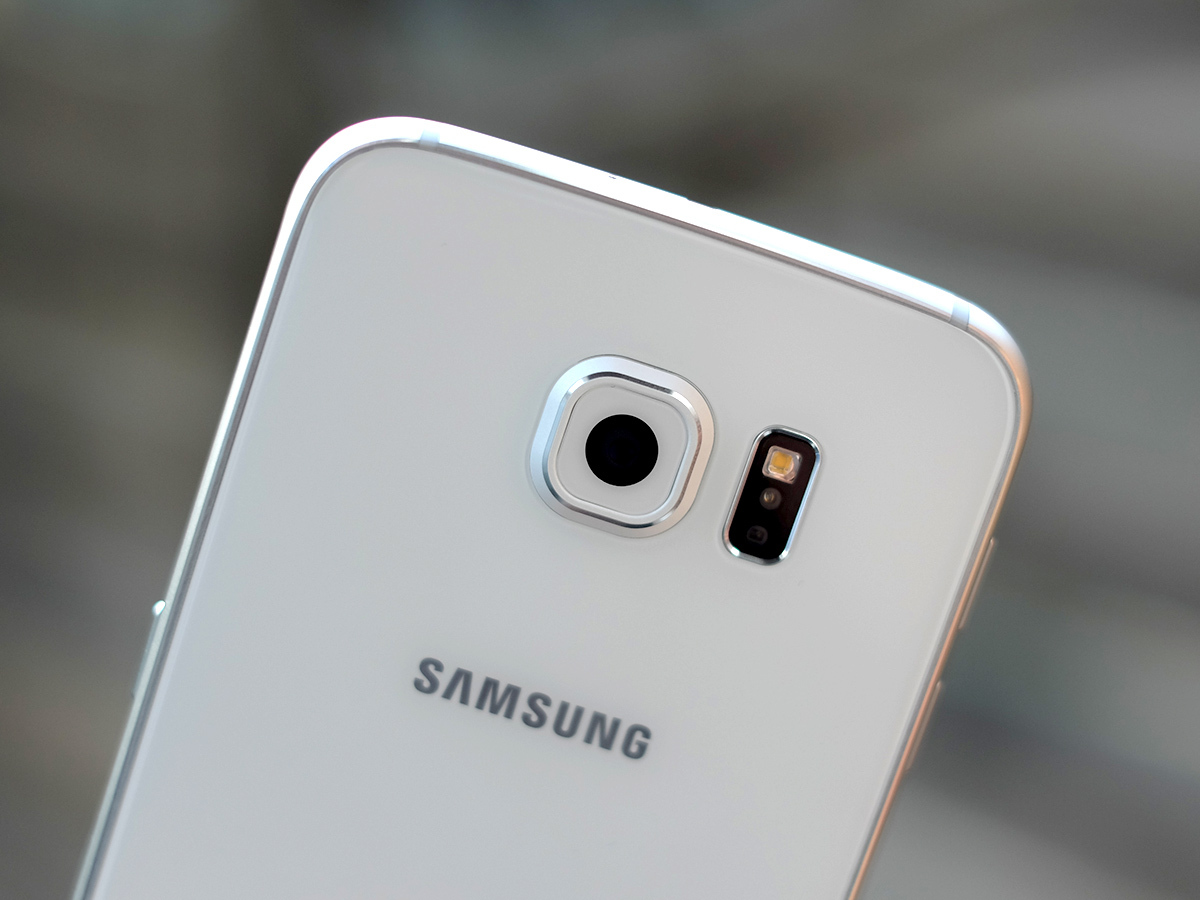
So which is the best camera? The only particularly clear result here is that there are losers. The HTC One M9 suffers from a bunch of fairly serious issues while the iPhone 6 Plus gets the edge over the vanilla iPhone 6, which is still pretty excellent.
Comparing the LG G4, iPhone 6 Plus and Samsung Galaxy S6 is a bit trickier. The LG G4 and Samsung Galaxy S6 are clearly superior if you start using the zoom, and generally provide more detail. They are also almost as reliable as the iPhone 6 Plus too in terms of speed, exposure and colour.
We do say almost, though: aside from a couple of low-light slip-ups, the iPhone 6 Plus’s colour and exposure are pretty much flawless. The LG G4 takes a bit more of an eye candy-happy approach, making its photos appear a bit brighter or warmer quite a lot of the time.
All three are winners, but the Samsung Galaxy S6 finds a happy medium that makes it that bit more flexible while still being loads of fun to use. It’s the one we’ll be packing next time we head down to the zoo.

